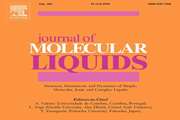How biomimetic nanofibers advance the realm of cutaneous wound management: The state-of-the-art and future prospects
The results of a review article, co-authored by researchers from the Biosensor Research Center at the Endocrinology and Metabolism Research Institute of Tehran University of Medical Sciences, Azad University of Sciences and Research, Sharif University of Technology, the University of Barcelona, and the University of Central Florida, have been published in the prestigious journal Progress in Materials Science, which has an impact factor of 4.37 and a citation score of 5.67. This article reviews advancements and innovative methods in the design of biomimetic nanofibrous materials with high potential for wound healing and skin regeneration.
Mercury (II) sensing using a simple turn-on fluorescent graphene oxide based aptasensor in serum and water samples
Abstract A simple, highly sensitive, and selective fluorometric aptasensing platform based on aptamer and graphene oxide (GO) is proposed for the determination of mercury (II) ion (Hg2+). In the designed assay, two aptamer probes, a carboxy-fluorescein (FAM) labeled aptamer (aptamer A) and its complementary (aptamer B) with partial complement containing several mismatches and GO as the quencher were used.
Emergence of sweet ligand-protein complexes from seemingly non-sweet conformations
Sweet taste perception starts from the interaction of a sweet molecule with residues of the sweet taste receptor (STR). Yet, how the perception of sweet taste emerges from this interaction is still not clear. Here, we reveal a potential mechanism in the initial stages of this cascade
Electrochemical Sensing Based on Nanofibers Modified Electrodes for Application in Diagnostic, Food and Waste Water Samples
Electrochemical sensors and biosensors are today important analytical and monitoring tools in various fields, from agriculture and the food industry to environmental and biomedical/pharmaceutical applications.






